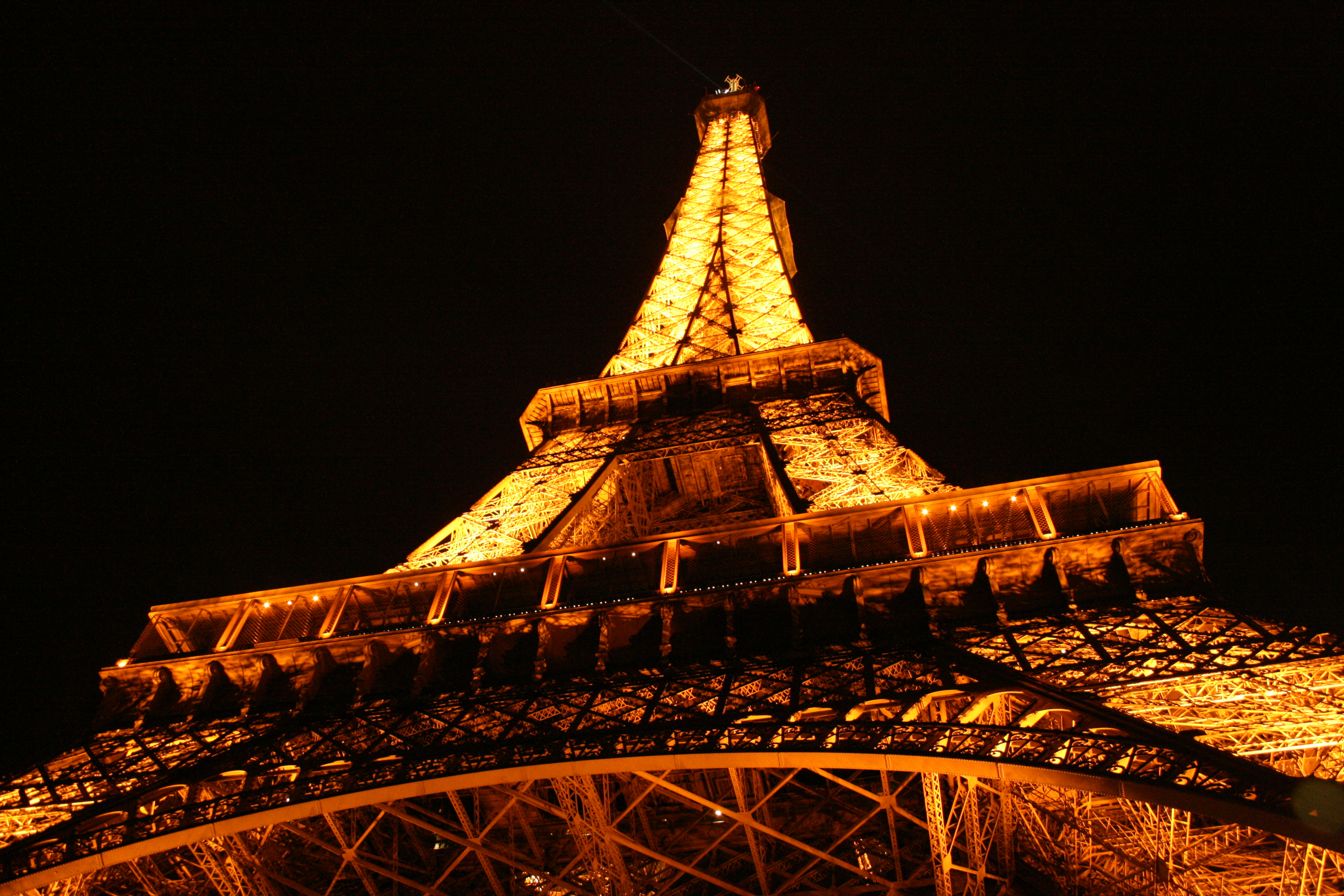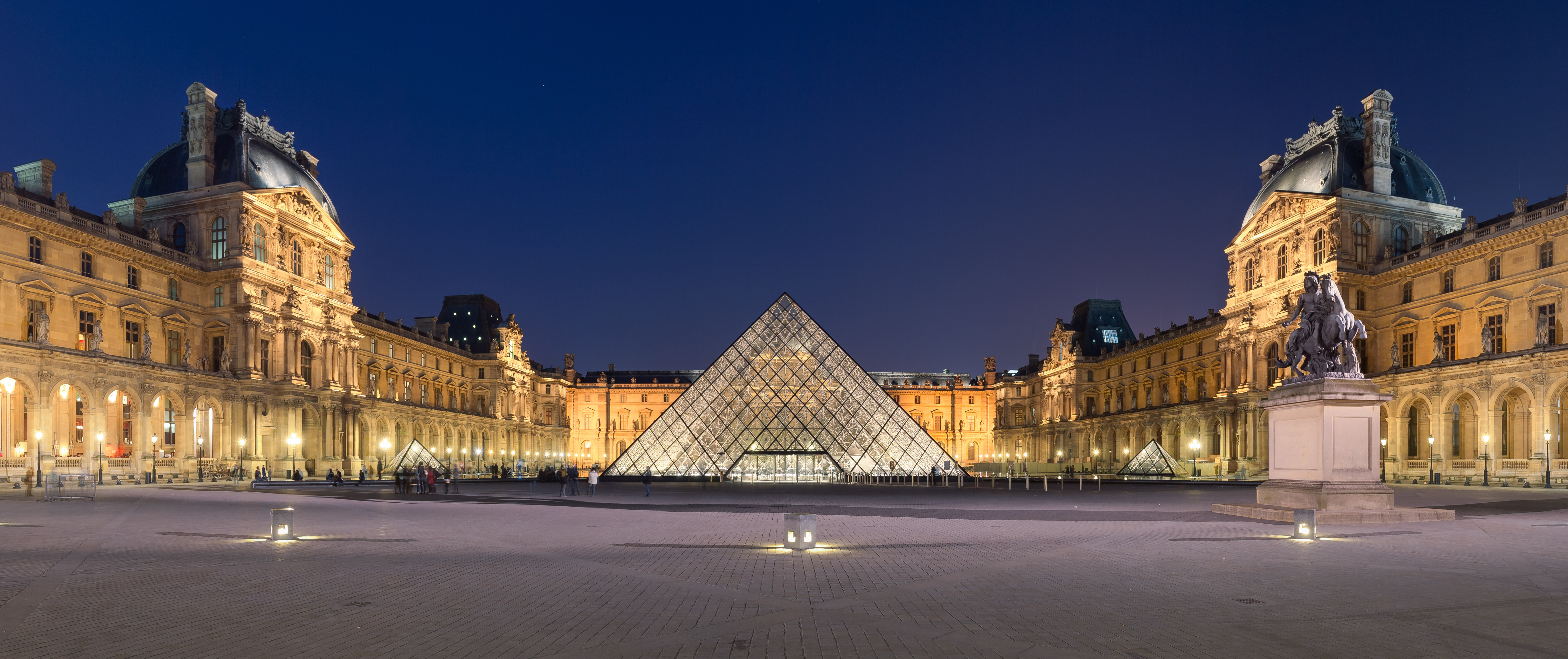Mythical as the world dream of one day visiting the city, Paris has kept its authenticity. There are still some small streets to explore around the major monuments and with an almost total absence of skyscrapers, Paris and its neighborhoods look more like a cluster of villages as a megalopolis.
From the Eiffel Tower to Notre Dame, to the Sacred Heart, the Arc de Triomphe or the Pompidou Centre, Paris has no shortage of famous landmark. Other images, less timeless but equally typical Parisian, are in the mind: the illuminated bridges reflecting off the Seine at night or cane chairs on the terrace breweries. Today, new buildings such as the Musée du Quai Branly continue to change the face of the capital.
The Paris always (and tourists) is alive and well: along major boulevards in fine dining and the windows of fashion houses and museums with outstanding collections, foremost among them the incomparable Louvre. A nice shop or a free table in a bistro stop your wanderings.
Eiffel tower
At night, it's the Eiffel Tower that was the most beautiful view of Paris. Each year, about 7 million visitors climb the floors of the tower, with a stop at three platforms (57 m, 115 m and 276 m). Most come during the day. On a clear day, the view extends to 60 km radius. In the evening, there is a lot less crowded. This means less time spent in the queue ... Once at the top, the view of the boulevards, streets and monuments all lit is really enchanting.
Although highly controversial when it was built for the Universal Exhibition of 1889, the masterpiece of Gustave Eiffel became, for the whole world, inseparable from Paris. Originally, the tower was intended to last only 20 years. She had her "survival" to his immensely popular and the development of radio communications: Gustave Eiffel in fact proposed to use as an antenna. A permanent radio station was installed in 1906 at the top. Then his modern aesthetic finally conquer even the most skeptical and the Eiffel Tower became the symbol of Paris. It was the tallest structure in the world until the construction of the Chrysler Building in Manhattan in 1930.
Every night, the Eiffel Tower lights up. In addition to the golden lighting, which dates from 1986, a dual-beam headlight with a range of 80 km lights on the upper deck (looking up, we see the lights of 6000 watts projectors ). And the first 10 minutes of every hour, the whole tower sparkles. Installation of 20,000 bulbs (5000 per side) required asked 5 months working 25 mountaineers. Seen from inside the tower, glitter is absolutely dazzling. But, be careful at night, it can be windy at the top, so be sure to take a sweater.
To make it last, you can book a table at one of the restaurants of the tower: the Eiffel Tower 58, the first level, or Jules Verne, the second level, accessible by private elevator.
The gradual introduction of online ticketing reduces queues, daytime and evening. In addition, when the space between the four legs has been refurbished (which is not expected before 2015 ...), visitors no longer patienteront under the weather. Creating a champagne bar on the 3rd floor is even expected!
ORSAY Museum
The outstanding collection of art from the second half of the nineteenth century the Musée d'Orsay is preserved in a beautiful Art Nouveau building: the former Orsay railway station. The station, built for the Universal Exhibition of 1900, was abandoned in 1939 because its banks were too short due to the electrification of lines and longer trains. In the 1970s, the station was classified as a historical monument, and the state decided to install a large museum for artistic creation from 1848 to 1914.
The museum is renowned especially for its collections of Impressionist and Post-paintings. Some works are absolutely essential: The Luncheon on the Grass and Olympia by Manet; Rue Montorgueil in Paris, Day June 30, 1878 Monet, Card Players, Green Apple and Blue Vase Cezanne; Bal au moulin de la Galette and Girls at the Piano Renoir; paintings devoted to the world of dance Degas; the works of Toulouse-Lautrec dealing with the world of cabaret; Harvest Pissarro; View of the Canal Saint-Martin Sisley; and landscapes of Auvers-sur-Oise outside Paris, painted by Van Gogh. The collections also include sculpture, photography, furniture, etc.
Join Parisian in the most elegant parks
 |
| LUXEMBOURG GARDEN |
The sun shines all Paris makes an appointment in parks, along the Seine and at sidewalk cafes. Metal chairs from the Luxembourg Gardens, especially dear to the heart of the Parisians, are under assault as soon as it is beautiful (lawns are prohibited).
The garden was built in the seventeenth century for Marie de Medici, then gave the Senate under the First Empire. Statues (nearly 80) make it a true open-air museum depicting the sculpture of the nineteenth century. Napoleon park dedicated to children. Many Parisians ethnic remember the time when they were sailing small boats on the octagonal pool, attending shows Guignol, were the rides and pony rides. These activities have not disappeared, but others - an area of modern games, sports fields - have been added. At the northwest corner of the park, players run every afternoon, whatever the weather, fierce games of cards and chess (bring your own game).
Photography exhibitions are frequently presented on the outer gates of the Garden, rue de Medici.
THE LOUVRE
The immensity of the Louvre could discourage art lovers most insatiable. The former residence of the kings of France extends indeed 700m along the Seine. It is estimated it would take about nine months to see one by one all the works that the museum holds!
The fortress of Philippe Auguste (early thirteenth century) was rebuilt in the mid-sixteenth to become a royal residence Francis. Until the reign of Louis XIV, the French kings ceased to work to modify and expand the palate. It's opened up in 1793 the Museum Central des Arts, the first national museum. Year after year, the collections extend and gradually invest the palate. From 1882 to permanently leaves the Louvre (with the exception of the Ministry of Finance, temporarily installed in the Richelieu wing), which is then devoted in its entirety to art.
In the 1980s, the Grand Louvre project is to make the museum the Richelieu wing and improve the presentation of collections and facilities. The museum is completely redesigned under the leadership of the Chinese-American architect IM Pei. Its glass pyramid was opened in 1989, work has led to the opening of new rooms and three courtyards. There are now 35,000 exhibits in 60,600 m2 of rooms reserved for permanent collections.
The works are divided into 8 departments: Oriental Antiquities, Egyptian Antiquities, Greek, Etruscan and Roman Antiquities, Islamic Art, Sculptures, Art, Paintings and Graphics Objects. Egyptian collections, exceptionally rich, owe much to the Egyptologist Jean-François Champollion, who first opened the Louvre in 1827 a department dedicated to ancient Egypt.
The Department of Paintings includes works representing all schools of European painting from the thirteenth century to 1848 It has about 6,000 paintings of 17 850 m2. For clarity, the works are classified by national school.
Tickets can be purchased in advance on the museum's website or installed in the Carrousel du Louvre machines. The Paris Museum Pass is valid. To avoid waiting at the main entrance of the pyramid, go through the Carrousel du Louvre (99 rue de Rivoli), or follow the exit "Louvre" at the metro station Palais Royal - Musée du Louvre . The ticket is valid all day ... which allows to pause.
Before embarking on the visit, obtain a map of the museum (free) information booth in the Hall Napoléon. Choose what you want and create a route. Otherwise, the tours are a good way to enhance its look. The audio guides also help circulate in this maze.
THE SEINE
To see the boats coming and going on the Seine, in charge of tourists waving their camera, one might be tempted to flee at all costs these cruises. Furthermore, no Parisian would consent to admit that he has already made a ...! However, once on board, gliding peacefully between the monuments and buildings along the most beautiful boulevard in Paris undoubtedly, we said we would have been wrong to give it up.
The boats that offer cruises on the Seine are called riverboats, named after the platform of the Flies, in Lyon, where they were manufactured. The best-known operator still called Bateaux Mouches, but other companies also offer this service. On some boats, it is possible to have lunch or dinner on board. The taxi boats themselves are actually a shuttle between the Botanical Gardens and the Eiffel Tower, with 8 stops.
Since June 2008, there is even a public transport service on the Seine river shuttle Voguéo. There now has five stations: Gare Austerlitz-Library Francois Mitterrand (outbound), Bercy (to return), Ivry - Pont-Mandela-Veterinary School in Maisons-Alfort. It takes 1 hour 20 minutes to complete the round trip. The line should be extended in the coming years.
That's not all what you can find in Paris, click here to find out more.






No comments:
Post a Comment